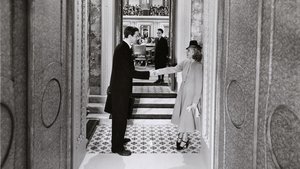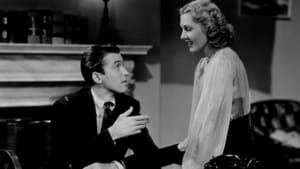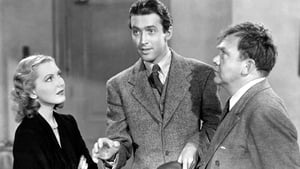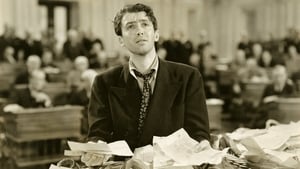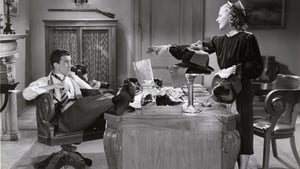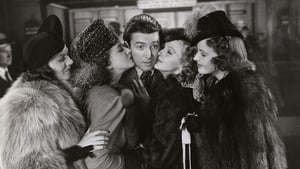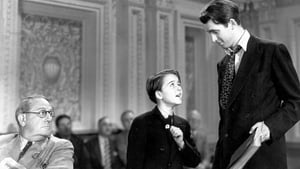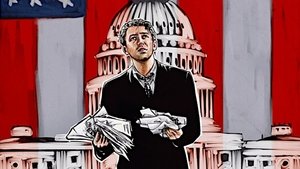Contact: [email protected]
Video Sources 0 Views
- Watch trailer
- Mr. Smith Goes to Washington

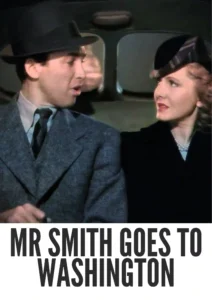
Synopsis
Table of Contents
ToggleReview: Mr. Smith Goes to Washington (1939) – A Timeless Political Drama in Vibrant Technicolor

Introduction
“Mr. Smith Goes to Washington” (1939) stands as a testament to the enduring power of idealism and integrity in the face of political corruption. In this article, we’ll delve into the significance of this early colored film, exploring its impact on audiences and its lasting legacy in the realm of political drama.
Check The Full Colorized Movies List
Check Our Colorized Movies Trailer Channel
Understanding Mr. Smith Goes to Washington 1939: Director, Cast, and Genre
Directed by the legendary Frank Capra, “Mr. Smith Goes to Washington” (1939) showcases his unparalleled ability to craft compelling narratives that resonate with audiences on a profound level. The film features an all-star cast, with James Stewart delivering a career-defining performance as the earnest and idealistic Jefferson Smith. Supported by a talented ensemble including Jean Arthur and Claude Rains, Stewart brings to life the indomitable spirit of a man determined to fight for what is right in the face of overwhelming odds. Blending elements of drama, comedy, and political thriller, “Mr. Smith Goes to Washington” (1939) remains a timeless classic that continues to captivate audiences with its stirring tale of courage and conviction.
Exploring the World of Mr. Smith Goes to Washington 1939: Plot and Characters
At its core, “Mr. Smith Goes to Washington” (1939) follows the journey of Jefferson Smith, a naive but idealistic young senator who finds himself thrust into the political arena after being appointed to fill a vacant seat. As he navigates the treacherous waters of Washington, D.C., Smith soon discovers the rampant corruption that pervades the halls of power. With the help of his loyal assistant, played by Jean Arthur, and a seasoned journalist, portrayed by Thomas Mitchell, Smith embarks on a crusade to expose the truth and uphold the principles of democracy. Along the way, he encounters a host of colorful characters, from scheming politicians to cynical bureaucrats, each vying for their own slice of power and influence.
The Art of Film Colorization
Film colorization serves as a transformative tool that allows filmmakers to breathe new life into classic movies, offering audiences a fresh perspective on familiar stories and characters. By adding color to black and white films, colorization enhances the visual experience and invites viewers to immerse themselves in the rich tapestry of cinematic worlds, exploring every nuance and detail with renewed appreciation and wonder.
Early Colored Films: A Brief History
The history of colored films stretches back to the early days of cinema, with filmmakers experimenting with various techniques to add color to their creations. From hand-painted frames to early Technicolor processes, the evolution of colored film has been marked by innovation and ingenuity, paving the way for the development of modern colorization techniques that continue to captivate audiences to this day.
Mr. Smith Goes to Washington 1939 and Its Early Colored Version
The decision to release “Mr. Smith Goes to Washington” (1939) in a colorized format was met with both excitement and apprehension. While some welcomed the opportunity to experience the film in vibrant color, others expressed concerns about the potential impact on its visual aesthetic. Nevertheless, the early colored version of “Mr. Smith Goes to Washington” (1939) offers viewers a fresh perspective on the timeless tale of political intrigue and moral courage, enhancing its emotional resonance and captivating audiences with its luminous beauty.
The Debate Over Film Colorization
The debate over film colorization continues to divide audiences and critics alike, with proponents praising its ability to breathe new life into classic movies and introduce them to a new generation of viewers, while detractors argue that it compromises the artistic integrity of the original work and diminishes its historical significance. As the debate rages on, filmmakers and audiences alike are left to ponder the merits and drawbacks of colorization in the ever-evolving landscape of cinema.
Examining Mr. Smith Goes to Washington 1939 as an Early Colored Film
As with any colorized classic, the impact of colorization on “Mr. Smith Goes to Washington” (1939) is a matter of personal interpretation. Some may argue that it enhances the film’s visual appeal and immerses viewers in its world, while others may feel that it detracts from the stark beauty of the original black and white version. Regardless of one’s stance on the issue, there’s no denying the enduring power of “Mr. Smith Goes to Washington” (1939) as a timeless political drama that continues to inspire and provoke thought.
Influence and Legacy: Mr. Smith Goes to Washington 1939’s Impact on Cinema
“Mr. Smith Goes to Washington” (1939) has left an indelible mark on the world of cinema, inspiring countless filmmakers and captivating audiences with its stirring tale of political intrigue and moral courage. From its unforgettable performances to its powerful message of hope and redemption, the film continues to resonate with viewers of all ages, reaffirming its status as a beloved classic of the political drama genre.
Director’s Cinematic Legacy: Beyond Mr. Smith Goes to Washington 1939
Frank Capra’s influence extends far beyond “Mr. Smith Goes to Washington” (1939), with a diverse body of work that continues to captivate audiences around the globe. From “It’s a Wonderful Life” to “Mr. Deeds Goes to Town,” Capra’s films are celebrated for their humanity, humor, and timeless wisdom, solidifying his legacy as one of the preeminent directors of Hollywood’s Golden Age. Through his groundbreaking work, Capra has left an indelible imprint on the world of cinema, inspiring generations of filmmakers to follow in his footsteps.
Themes Explored in Mr. Smith Goes to Washington 1939
“Mr. Smith Goes to Washington” (1939) explores a myriad of themes, from the corrupting influence of power to the enduring strength of the human spirit. Through its richly drawn characters and poignant storytelling, the film invites viewers to ponder the complexities of politics and the timeless virtues of honesty, integrity, and perseverance. As audiences immerse themselves in the world of “Mr. Smith Goes to Washington” (1939), they are reminded of the importance of standing up for what is right and fighting for justice in the face of adversity.
Reception and Controversy Surrounding Mr. Smith Goes to Washington 1939
Upon its release, “Mr. Smith Goes to Washington” (1939) received widespread critical acclaim, with many praising its heartfelt performances, stirring screenplay, and powerful message. However, the decision to release the film in a colorized format sparked debate among purists, reigniting the age-old discussion surrounding film preservation and artistic integrity. Despite the controversy, “Mr. Smith Goes to Washington” (1939) remains a beloved classic that continues to resonate with audiences of all ages, reaffirming its status as a timeless masterpiece of the political drama genre.
Where to Watch Mr. Smith Goes to Washington 1939 Online
For those eager to experience the timeless magic of “Mr. Smith Goes to Washington” (1939), the film is readily available on popular streaming platforms such as Netflix, Amazon Prime, and Hulu. Whether you choose to watch it in its original black and white format or the early colored version, “Mr. Smith Goes to Washington” (1939) promises to transport you to a world of political intrigue and moral courage, where the fate of a nation hangs in the balance and the spirit of democracy shines brightest in the darkest of times.
FAQs About Mr. Smith Goes to Washington 1939
Q: Is “Mr. Smith Goes to Washington” (1939) based on a true story? A: No, “Mr. Smith Goes to Washington” (1939) is a fictional tale crafted by screenwriter Sidney Buchman, inspired by real-life events and political scandals of the time.
Q: Who are the main actors in “Mr. Smith Goes to Washington” (1939)? A: “Mr. Smith Goes to Washington” (1939) features an ensemble cast led by the talented James Stewart, whose portrayal of Jefferson Smith remains one of the most iconic performances in cinematic history.
Q: What awards did “Mr. Smith Goes to Washington” (1939) win? A: “Mr. Smith Goes to Washington” (1939) received multiple Academy Award nominations, including Best Picture and Best Director, although it did not win in any category. However, its impact on audiences and its enduring legacy in the realm of political drama cannot be overstated.
Q: Why was “Mr. Smith Goes to Washington” (1939) released in a colorized format? A: The decision to release “Mr. Smith Goes to Washington” (1939) in color was made to introduce the film to a new generation of viewers and enhance its visual appeal for modern audiences. While the choice to colorize the film sparked debate among purists, it ultimately allowed “Mr. Smith Goes to Washington” (1939) to reach a wider audience and ensure its continued relevance in the annals of cinematic history.
Conclusion
As we reflect on the enduring legacy of “Mr. Smith Goes to Washington” (1939), let us celebrate its status as a timeless classic that continues to captivate audiences with its stirring tale of political intrigue and moral courage. Whether viewed in its original black and white format or the early colored version, “Mr. Smith Goes to Washington” (1939) remains a shining example of the power of cinema to inspire, entertain, and provoke thought.
So, whether you’re a seasoned cinephile or a casual moviegoer, take a moment to revisit “Mr. Smith Goes to Washington” (1939) and experience the magic of political drama as never before. For in the timeless struggle of one man against the forces of corruption and greed, you’ll find a story that resonates with the hopes and dreams of every generation, reminding us of the enduring power of democracy and the indomitable spirit of the human soul.

